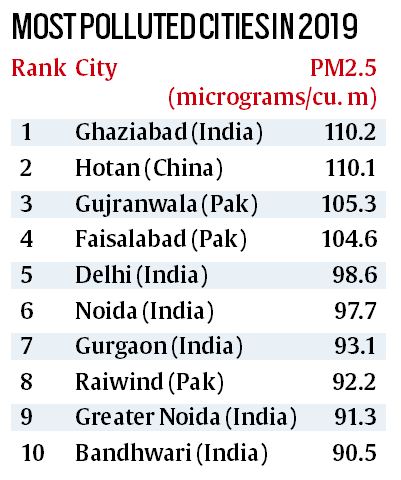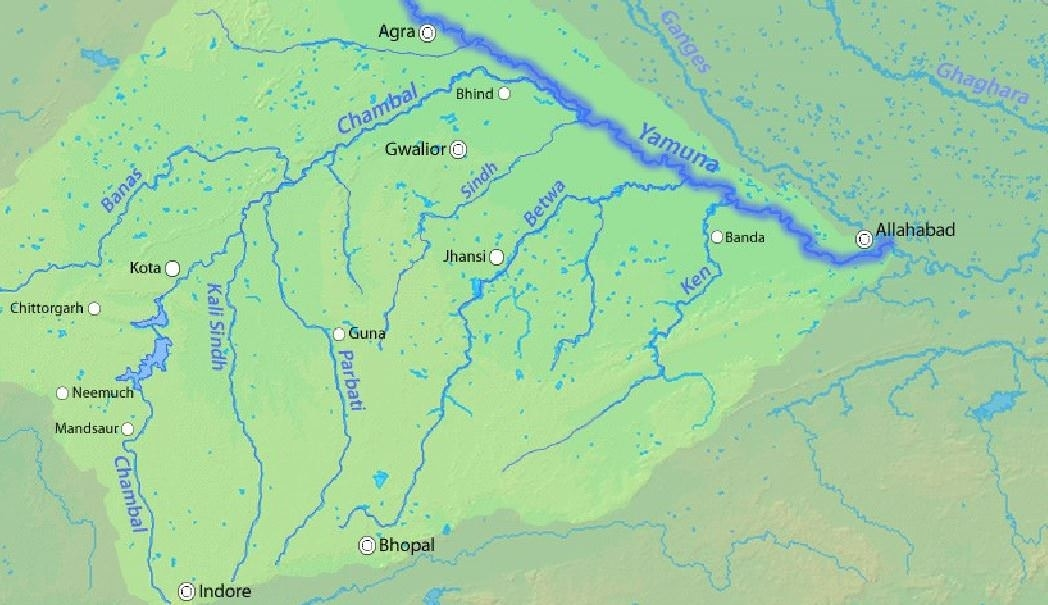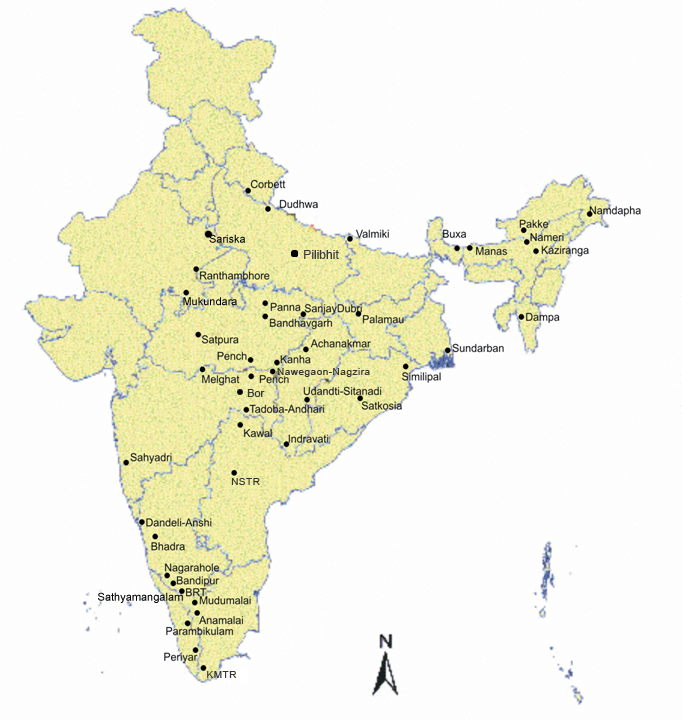International Relations
USA President’s Visit to India
Why in News
The President of the USA, Donald Trump, visited India from 24th - 25th February, 2020.
- India and the USA intended to upgrade their bilateral relationship to a Comprehensive Global Strategic Partnership (CGSP).
- The CGSP will include issues such as defence, security cooperation and revitalisation of the Indo-Pacific with quadrilateral dialogue.
Economic Relations
- Free Trade Agreement (FTA):
- The USA has proposed the Free Trade Agreement (FTA) between the two countries.
- FTA will include the restoration of benefits of low or zero duty to certain Indian exports under the Generalised System of Preferences (GSP) and market access for each other’s agricultural products.
- The Trade Policy Forum will be set up as a joint study group to facilitate smooth framing of FTA.
- Proposed Totalisation Agreement:
- The signing of this agreement will allow Indian professionals working in the USA to get a refund of social security contribution that they make while working in the USA.
- Intellectual Property Rights:
- India and the USA have decided to come up with a comprehensive agreement on intellectual property rights (IPR).
- A comprehensive deal on the IPR front would be a major development as India has slipped to the 40th position on the US Chamber's International IP Index, 2020.
- Energy Trade:
- Both countries intend to come with an energy deal in the future.
- India imports a significant portion of its energy needs from the US, which has only increased in the past few years. The USA is the sixth-largest oil supplier to India.
- Bilateral Trade:
- The United States has become India's top trading partner surpassing China.
- The bilateral trade between the US and India stood at nearly 88 billion dollars in 2018-19 compared to China which was at 87.1 billion dollars.
Security and Terrorism
- Cross border Terrorism:
- Both the countries condemned cross-border terrorism in all its forms.
- They also called on Pakistan to ensure that no territory under its control is used to launch terrorist attacks and to expeditiously bring to justice the perpetrators of such attacks.
- Kashmir Issue:
- The USA president reiterated its offer to mediate on the Kashmir issue during the visit.
- However, India stated that it is a bilateral matter between India and Pakistan and there is no scope for any third-party mediation.
- Cyber Security:
- India and the United States recognised the need for an innovative digital ecosystem that is secure and reliable and facilitates the flow of information and data.
Defence Relations
- USA and India have concluded the agreement for the purchase of 24 MH-6OR Seahawk, and six AH-64E attack helicopters.
International Issues
- Quad Dialogue: U.S. and India stressed to revitalise the quadrilateral initiative consisting of Japan, the U.S., India and Australia.
- Indo-Pacific Region: Both the countries discussed to develop and evolve the Indo-Pacific region collaboratively.
- South China Sea Region.
- Both sides took note of the efforts of the ASEAN region to create a code of conduct in the South China Sea region.
- A code of conduct in the South China Sea region will be a set of rules outlining the norms and rules and responsibilities of, or proper practices for, an individual, party or organisation in the region.
Biodiversity & Environment
CMS COP-13
Why in News?
The UN Environment Programme’s (UNEP) 13th Conference of Parties (COP) on the Conservation of Migratory Species of Wild Animals (CMS) concluded in Gandhinagar (Gujarat) on 22nd February 2020.
- The theme of CMS COP-13 was ‘Migratory species connect the planet and we welcome them home’.
- The mascot for CMS COP-13 was ‘Gibi – The Great Indian Bustard’. It is a critically endangered species (according to the IUCN) and has been accorded the highest protection status (listed in Schedule I) under the Wildlife Protection Act, 1972.
Highlights
- The CMS COP-13 has adopted the Gandhinagar Declaration which calls for migratory species and the concept of ‘ecological connectivity’ to be integrated and prioritized in the post-2020 global biodiversity framework.
- The post-2020 global biodiversity framework is likely to be adopted by the 15th meeting of the Conference of the Parties (CoP 15) to the Convention on Biological Diversity in China’s Kunming in October 2020.
- Ten migratory species were added to CMS Appendices at COP-13 including the Asian Elephant, Jaguar and Great Indian Bustard.
- India, as COP-13 host, has assumed the role of COP Presidency for the three years.
- India pledged to focus on the conservation of migratory birds along the Central Asian Flyway and announced the establishment of an institutional facility for undertaking research and assessment of the conservation of migratory birds, the conservation of marine turtles, reduction of pollution from micro-plastic and single-use plastic, transboundary protected areas, and sustainable infrastructure development.
Conservation of Migratory Species of Wild Animals
- In order to protect the migratory species throughout their range countries, a Convention on Conservation of Migratory Species (CMS), has been in force since 1983, under the aegis of United Nations Environment Programme.
- Also referred to as the Bonn Convention, it provides a global platform for the conservation and sustainable use of migratory animals and their habitats.
- The Conference of Parties (COP) is the decision-making organ of this convention.
- CMS Appendices
- Under this convention, migratory species threatened with extinction are listed on Appendix I and Parties strive towards strictly protecting these animals, conserving or restoring the places where they live, mitigating obstacles to migration and controlling other factors that might endanger them.
- Migratory species that need conservation and management or would significantly benefit from international co-operation are listed in Appendix II of the Convention.
- India has been a Party to the CMS since 1983.
Migratory Species in India
- India is a temporary home to several migratory animals and birds.
- The important among these include Amur Falcons, Bar-headed Geese, Black-necked cranes, Marine turtles, Dugongs, Humpbacked Whales, etc.
- The Indian sub-continent is also part of the major bird flyway network, i.e, the Central Asian Flyway (CAF) that covers areas between the Arctic and Indian Oceans.
- India has also launched the National Action Plan for the conservation of migratory species under the Central Asian Flyway.
Disaster Management
National Conference on Coastal Disaster Risk Reduction and Resilience
Why in News
Recently, the first ‘National Conference on Coastal Disaster Risk Reduction and Resilience (CDRR&R) – 2020’ was held in New Delhi.
- The one-day conference was organised by the National Institute of Disaster Management (NIDM).
Key Takeaways
- Enhancement of human capacity in terms of a better understanding of coastal disaster risks and effective collaborative actions.
- Dissemination of information related to national and local strategies for coastal disaster risk reduction and resilience as well as to develop a network mode roadmap for addressing the gaps by engaging with the institutions, researchers and experts.
- Implementation of the Prime Minister’s 10-point agenda and Sendai Framework for Disaster Risk Reduction.
The Prime Minister’s 10-point Agenda
- The Prime Minister had listed the agenda during his inaugural speech at the Asian Ministerial Conference on Disaster Risk Reduction (AMCDRR) 2016, held in New Delhi.
- It includes the following elements namely.
- All development sectors must imbibe the principles of disaster risk management.
- Work towards risk coverage for all-starting from poor households to SMEs to multinational corporations to nation-states.
- Encourage greater involvement and leadership of women in disaster risk management.
- Invest in risk mapping globally. For mapping risks related to hazards like earthquakes, we have accepted standards and parameters.
- Leverage technology to enhance the efficiency of our disaster risk management efforts.
- Develop a network of universities to work on disaster issues.
- Utilise the opportunities provided by social media and mobile technologies.
- Build on local capacity and initiative.
- Opportunity to learn from a disaster must not be wasted. After every disaster there are papers on lessons that are rarely applied.
- Bring about greater cohesion in the international response to disasters.
Sendai Framework for Disaster Reduction 2015-30
- It was adopted at the Third United Nations World Conference on Disaster Risk Reduction, held from March 14 to 18, 2015 in Sendai, Miyagi, Japan.
- It aims to guide the multi-hazard management of disaster risk in development at all levels as well as within and across all sectors.
- It is the successor instrument to the Hyogo Framework for Action (HFA) 2005-2015: Building the Resilience of Nations and Communities to Disasters.
National Institute of Disaster Management
- The National Institute of Disaster Management (NIDM) was constituted underDisaster Management Act 2005 with a vision to play the role of a premier institute for capacity development in India and the region.
- It has been assigned nodal responsibilities for human resource development, capacity building, training, research, documentation and policy advocacy in the field of disaster management.
Biodiversity & Environment
World Air Quality Report 2019
Why in News
India was the fifth most polluted country in 2019 and accounts for almost two-thirds of the world’s most polluted cities according to the World Air Quality Report 2019.
- The report was released by the pollution tracker IQAir and Greenpeace.
- The ranking is based on a comparison of PM 2.5 levels.
PM 2.5
- It is an atmospheric particulate matter of diameter of fewer than 2.5 micrometres, which is around 3% the diameter of a human hair.
- It causes respiratory problems and also reduces visibility. It is an endocrine disruptor that can affect insulin secretion and insulin sensitivity, thus contributing to diabetes.
- It is very small and can only be detected with the help of an electron microscope.
Key Points
- Bangladesh emerged as the most polluted country for PM 2.5 exposure followed by Pakistan, Mongolia, Afghanistan and India.
- 21 of the 30 most polluted cities in the world are located in India with Ghaziabad in the National Capital Region ranked the world’s most polluted.
- Indian cities, on average, exceed the World Health Organisation (WHO) target for annual PM 2.5 exposure by 500%.
- For example, Mumbai’s annual PM 2.5 concentration is 45.3 micrograms/cubic metre, when it should be 10 micrograms/cubic metre according to the WHO.
- However, national air pollution decreased by 20% from 2018 to 2019, with 98% of cities experiencing improvements.
- India launched a National Clean Air Programme (NCAP) in 2019 that commits to reducing air pollution in 102 most polluted cities by a maximum of 30% by 2024.
- The report, however, noted that the reduction in pollution in 2019 couldn’t be attributed to the NCAP but to the slowing of the marketplace.
- According to the Economic Survey 2019-20, the economic growth rate in India is expected to slow down to 5% in 2019-20 from 6.1% in 2018-19 and 7% in 2017-18.
- The Report highlights elevated air pollution levels as a result of climate change events, such as sandstorms, wildfires and pollution gains from the rapid urbanization of cities in regions such as Southeast Asia.
- While some achievements have been made in air quality monitoring infrastructure globally, there are still huge gaps in access to data around the world.
- It is to be noted that the World Air Quality Report is different from the State Of Global Air Report which is produced by the Boston-based Health Effects Institute (HEI).
Important Facts For Prelims
Mukundara Hills Tiger Reserve
- Location: The Mukundra Tiger Reserve (TR) is located near Kota, Rajasthan.
- The park is situated in a valley formed by two parallel mountains viz. Mukundra and Gargola.
- The 4 rivers (Ramzan, Ahu, Kali and Chambal) form the boundary of the valley.
- It is located on the eastern bank of the Chambal River and is drained by its tributaries.
- Protected Area: The Mukundra Hills was declared a Wildlife Sanctuary in 1955 and a National Park (Mukundra Hills (Darrah) National Park) in 2004.
- It was notified as a Tiger Reserve (2013) under the Wildlife Protection Act, 1972 and became the 3rd Tiger Reserve of Rajasthan in the form of the Mukundra Hills Tiger Reserve.
- Other Tiger Reserves in Rajasthan: Ranthambore and Sariska.
- History: In the past, the reserve was the royal hunting ground of the Maharaja of Kota. The name Darrah is taken as the ‘pass’ in the local language revealing the purpose that the region served earlier. The Marathas, Rajput’s and the British utilized the opportune position of the forest to seek asylum during war.
- Parks and Sanctuaries Included: The Mukundra TR constitutes 3 Wildlife Sanctuaries viz; Darrah, Jawahar Sagar and Chambhal and covers 4 key districts of Rajasthan (Kota, Bundi, Chittorgarh and Jhalawar). The forest of the reserve is very thick and dense.
- Other National Parks (NP) in Rajasthan: Desert NP, Keoladeo Ghana NP, Ranthambore NP, Sariska NP.
Chambal River
- Chambal River originates at the Singar Chouri peak in the northern slopes of the Vindhya mountains (Indore, Madhya Pradesh). From there, it flows in the North direction in Madhya Pradesh and then follows a north-easterly direction through Rajasthan.
- It enters Uttar Pradesh and joins the Yamuna River in Etawah District.
- It is a rainfed river and its basin is bounded by the Vindhyan mountain ranges and the Aravallis. The Chambal and its tributaries drain the Malwa region of northwestern Madhya Pradesh.
- Tributaries: Banas, Kali Sindh, Parbati.
- It is one of the most pollution-free rivers of India.
Tiger Reserves in India
Important Facts For Prelims
Gujarat’s Disturbed Areas Act
Why in News
The Gujarat government has announced that it would place parts of Khambhat, a town in Anand district under the Disturbed Areas (DA) Act due to the recent communal violence outbreaks in the town.
- The Act, also known as the Gujarat Prohibition of Transfer of Immovable Property and Provision for Protection of Tenants from Eviction from Premises in Disturbed Areas Act, 1991, aims at preventing distress sale of properties in communally-sensitive areas.
- Under this Act, permission of district collector is mandatory for the sale or transfer of property in the areas notified as “disturbed” to ensure that the sale was not out of any distress or compulsion, and to see that the seller had received a fair price.
- The Act is currently in force in parts of Ahmedabad, Vadodara, Surat, Bharuch, Kapadvanj, Anand and Godhra towns.
- The DA Act was first introduced in Ahmedabad in 1986 to check the large scale distress sale of properties mainly by people of a particular community due to continuous riots in Ahmedabad.
- The then Gujarat Chief Minister brought in an ordinance which was later converted into the DA Act in 1991.
- However, the focus of the Act has changed from checking distress sale of properties to checking polarisation of disturbed areas through the transfer of properties by alleged coercive means.
Important Facts For Prelims
Yakshagana
- Yakshagana is a traditional theatre form of Karnataka.
- It is a temple art form that depicts mythological stories and Puranas.
- It is performed with massive headgears, elaborate facial make-up and vibrant costumes and ornaments.
- Usually recited in Kannada, it is also performed in Malayalam as well as Tulu (the dialect of south Karnataka).
- It is performed with percussion instruments like chenda, maddalam, jagatta or chengila (cymbals) and chakratala or elathalam (small cymbals).
Important Facts For Prelims
Singur Dam
- Singur Dam is located in Medak district of Telangana.
- It was constructed on the Manjeera River in 1989.
- Manjeera is a tributary of Godavari river.
- Manjeera river originates in Maharashtra and flows from the states of Karnataka and Telangana.
- It is a reservoir built for hydroelectric and irrigation purposes.
- It also serves as a source of drinking water for Hyderabad.
The deep waters of the reservoir are home to about 1000 crocodiles.








